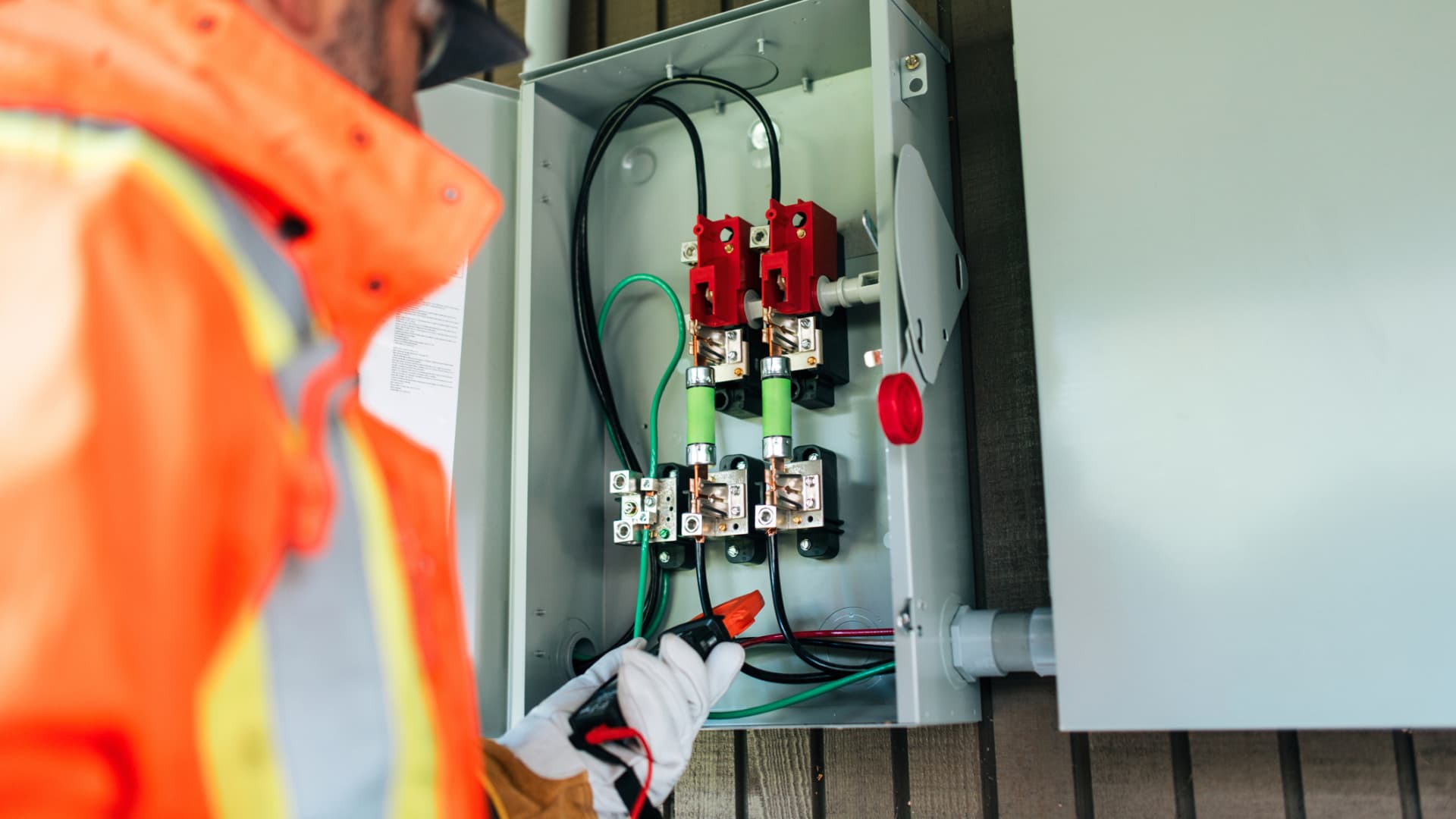Ryanjlane | E+ | Getty ImagesRebates tied to home energy efficiency and created by the Inflation Reduction Act may start flowing to many consumers within months. The federal government is issuing $8.8 billion for Home Energy Rebates programs through states, territories and tribes, which must apply for the funding. The U.S. Department of Energy approved the first application, for New York, on April 18, awarding it an initial $158 million.The DOE is hopeful New York will open its program to consumers by early summer, according to Karen Zelmar, the agency’s Home Energy Rebates program manager. The state has the fourth-largest total funding allocation, behind California, Texas and Florida. The federal rebates — worth up to $14,000 or more per household, depending on a state’s program design — are basically discounts for homeowners and landlords who make certain efficiency upgrades to their property.More from Personal Finance:Why FEMA has spent $4 billion to help destroy flood-prone homes90% of qualifying EV buyers opt to get $7,500 tax credit upfrontWhat the SEC vote on climate disclosures means for investorsThe rebates aim to partially or fully offset costs for efficiency projects like installing electric heat pumps, insulation, electrical panels and Energy Star-rated appliances.Their value and eligibility vary according to factors like household income, with more money flowing to low and middle earners.The DOE also expects the programs to save households $1 billion a year in energy costs due to higher efficiency, Zelmar said.Eleven other states have also applied for funding: Arizona, California, Colorado, Georgia, Hawaii, Indiana, Minnesota, New Hampshire, New Mexico, Oregon and Washington. Many other states are also far along in their application process, Zelmar said. “We certainly hope to see all the programs launched … by this time next year, and hopefully much sooner than that for many of the states,” she said.States must notify the Energy Department they intend to participate by Aug. 16, 2024. Applications are due by Jan. 31, 2025.These are key details about the rebatesThe Inflation Reduction Act earmarked $369 billion in spending for policies to fight climate change, the biggest piece of climate legislation in U.S. history. President Biden signed the measure into law in August 2022.The IRA splits $8.8 billion in total rebate funding between two programs: the Home Efficiency Rebates program and the Home Electrification and Appliance Rebates program.New York’s application was approved for the the latter program. So far, just four states — Georgia, Oregon, Indiana and New Mexico — have applied for both.”I hope that at this time next year we have 50 states with rebate programs,” s …
Article Attribution | Read More at Article Source
[mwai_chat context=”Let’s have a discussion about this article:nnRyanjlane | E+ | Getty ImagesRebates tied to home energy efficiency and created by the Inflation Reduction Act may start flowing to many consumers within months. The federal government is issuing $8.8 billion for Home Energy Rebates programs through states, territories and tribes, which must apply for the funding. The U.S. Department of Energy approved the first application, for New York, on April 18, awarding it an initial $158 million.The DOE is hopeful New York will open its program to consumers by early summer, according to Karen Zelmar, the agency’s Home Energy Rebates program manager. The state has the fourth-largest total funding allocation, behind California, Texas and Florida. The federal rebates — worth up to $14,000 or more per household, depending on a state’s program design — are basically discounts for homeowners and landlords who make certain efficiency upgrades to their property.More from Personal Finance:Why FEMA has spent $4 billion to help destroy flood-prone homes90% of qualifying EV buyers opt to get $7,500 tax credit upfrontWhat the SEC vote on climate disclosures means for investorsThe rebates aim to partially or fully offset costs for efficiency projects like installing electric heat pumps, insulation, electrical panels and Energy Star-rated appliances.Their value and eligibility vary according to factors like household income, with more money flowing to low and middle earners.The DOE also expects the programs to save households $1 billion a year in energy costs due to higher efficiency, Zelmar said.Eleven other states have also applied for funding: Arizona, California, Colorado, Georgia, Hawaii, Indiana, Minnesota, New Hampshire, New Mexico, Oregon and Washington. Many other states are also far along in their application process, Zelmar said. “We certainly hope to see all the programs launched … by this time next year, and hopefully much sooner than that for many of the states,” she said.States must notify the Energy Department they intend to participate by Aug. 16, 2024. Applications are due by Jan. 31, 2025.These are key details about the rebatesThe Inflation Reduction Act earmarked $369 billion in spending for policies to fight climate change, the biggest piece of climate legislation in U.S. history. President Biden signed the measure into law in August 2022.The IRA splits $8.8 billion in total rebate funding between two programs: the Home Efficiency Rebates program and the Home Electrification and Appliance Rebates program.New York’s application was approved for the the latter program. So far, just four states — Georgia, Oregon, Indiana and New Mexico — have applied for both.”I hope that at this time next year we have 50 states with rebate programs,” s …nnDiscussion:nn” ai_name=”RocketNews AI: ” start_sentence=”Can I tell you more about this article?” text_input_placeholder=”Type ‘Yes'”]

